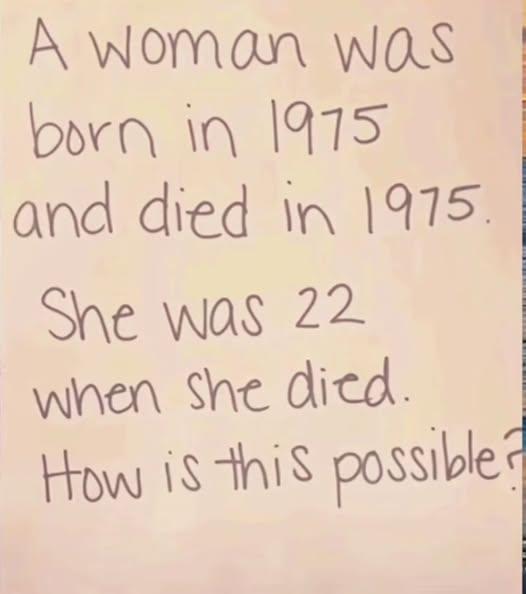Here’s a riddle that confuses many: “A woman was born in 1975 and died in 1975, but she was 22 years old when she died. How is that possible?” It seems impossible because being born and dying in the same year usually means a very short life.
The answer lies in how we think about the number 1975. We immediately link it to a calendar year, but what if it’s something else?
Imagine 1975 is a room number. The woman was born in Room 1975 and died there as well. She lived 22 years, but the number isn’t a year—it’s a location.
This riddle tricks us by using a number that our brains automatically associate with time. Once we shift our thinking, the puzzle makes perfect sense.
It’s a great example of how assumptions shape our understanding. Many people get stuck trying to solve it until they realize the number’s true meaning.
Sharing this riddle can challenge others to think differently and question their own assumptions.
It also teaches a broader lesson: sometimes, the key to solving problems is to change how we look at them and consider alternative meanings.


